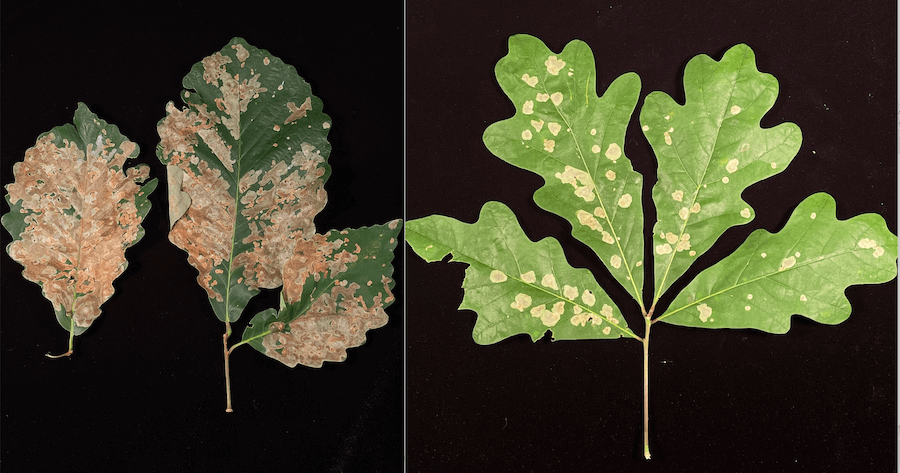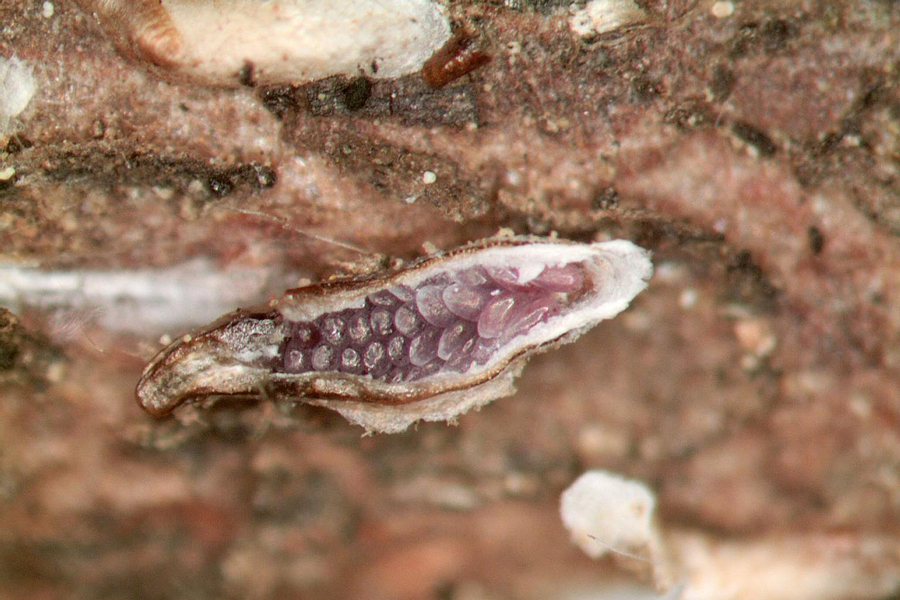
“What’s wrong with the leaves on my oak tree? Is my tree dying?”
Over the past several weeks, University of Georgia Cooperative Extension offices across north Georgia have been flooded with calls from residents asking about their oak trees. Whether white, red or chestnut oaks, the question has been the same.
Oak leaf samples observed by county Extension agents have exhibited foliage with large irregular blotches on the leaves. New damage can appear light tan in color, with older damage typically turning into large brown blotches. Most residents who spot this damage want to know if their tree has a disease that is killing it.
But this is not a fungal pest infecting their trees. This damage is caused by an insect pest called the solitary oak leafminer.
If you take a moment to inspect the foliage of a nearby oak tree (especially white oaks and chestnut oaks) you can easily notice the damage caused by the solitary oak leafminer. Nearly every year, oak tree leaves all over north Georgia are fed upon by this insect pest.
While this typically happens in August in our area, the solitary oak leafminer has appeared early this year and in greater numbers than previous years.
Identifying the pest

Solitary oak leafminers, or Cameraria hamadryadella, are tiny caterpillars about a quarter-inch long that, up close, resemble a rattlesnake’s rattle.
They are called leafminers because they feed between the outer layers of oak leaves, forming irregular shaped blotches on the foliage.
Each blotch that you see on the leaf is caused by a single leafminer. The adult form of this pest is a very small silver-colored moth with tan blotches on its wings.
The lifecycle of leafminers
Adult moths emerge sometime in spring, mate, then lay eggs one by one on the surface of the oak leaf.
Once their eggs hatch, larvae enter between the layers of the leaf. From there, the caterpillars feed between the layers of the leaf creating the blotch-like damage that later becomes noticeable. Following the feeding stage, these larvae will spin a cocoon and pupate within the confines of the leaf.
It is possible to have two generations of the insects each year. The later generation will form a pupa and then reside in the fallen leaves over the winter until the following spring when they emerge and the cycle starts all over again.
Leafminer damage control
Before you grab a backpack sprayer and start climbing a tree, it is good to know that while oak leafminer damage may look unattractive, it is seldom of much concern to the health of your tree.
When the damaged leaves shed this fall, the new growth next spring will come back with a fresh start. If a heavily damaged leaf drops early, it will be replaced by a new one.
If you want to take action against this pest, you can rake the fallen leaves and dispose of them. This is helpful because the insect often survives over the winter in the fallen debris.
If you dispose of the fallen debris, you will help reduce the oak leafminer population and lower infestations for next season.
For help diagnosing plant pests or diseases in your landscape, contact your local UGA Extension agent.




